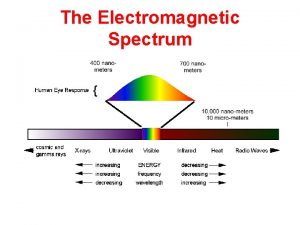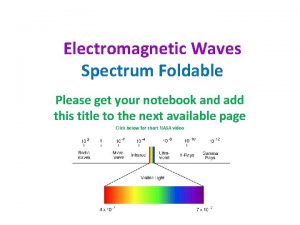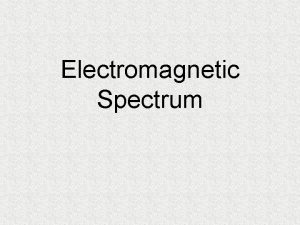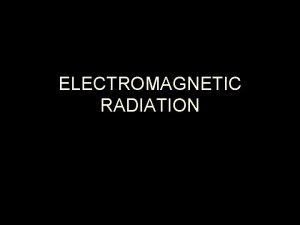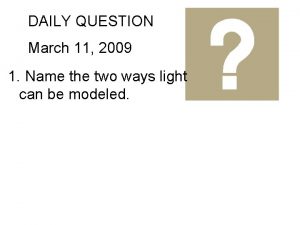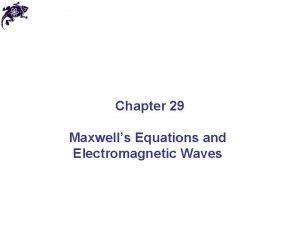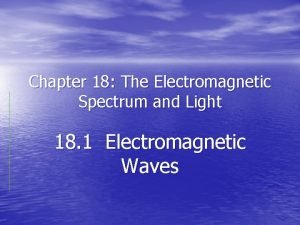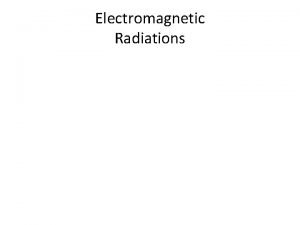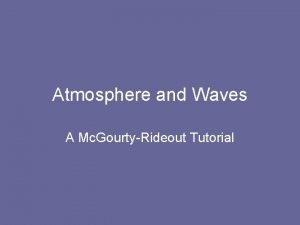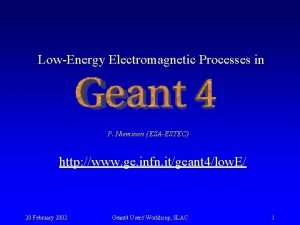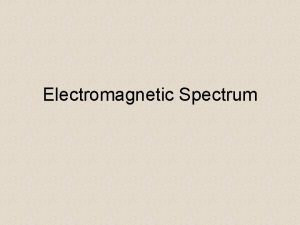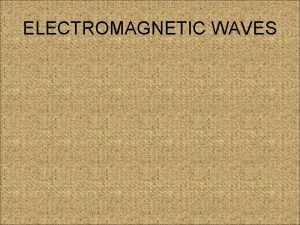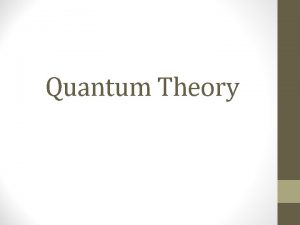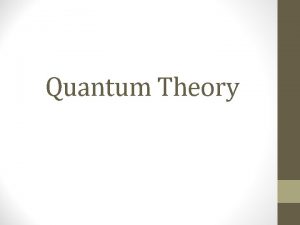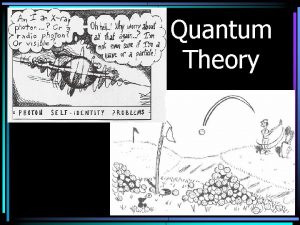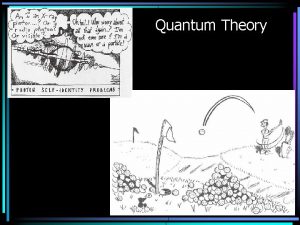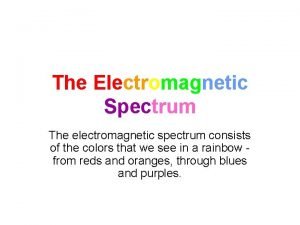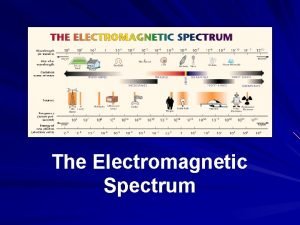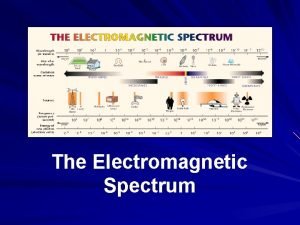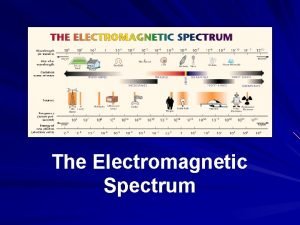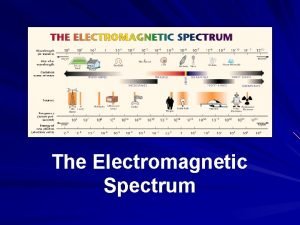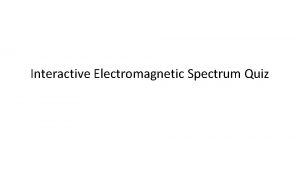Quantum Theory The Electromagnetic Spectrum Definition The electromagnetic



















- Slides: 19

Quantum Theory The Electromagnetic Spectrum

Definition: • The electromagnetic spectrum is a collection of all of the types of electromagnetic radiation. • These are forms of energy that move from point to point as waves – not requiring the presence of matter to transfer that energy.

Diagram of a Wave

Parts of Waves

Definition - Amplitude

Wavelength

Frequency • Frequency is defined as the number of complete wavelengths that pass a defined point per unit time. • The usual time unit is seconds, so the correct units for time are actually 1/sec ( or sec-1 ). This odd unit may be called “hertz”, which is the scientific equivalent for 1/sec.

Consider the following graphs: Take special note of how the wavelength and the frequency are inversely related to each other.


The “Wave Equation” • Physics gives us that the • Where “c” is the speed of of light which is electromagnetic waves 3. 0 x 108 meters/sec is equal to the frequency times the • “f” is the frequency in wavelength. hertz (1/sec) • In equation form, it is c = f λ • λ is the wavelength in meters

The Wave Equation Pyramid c f λ

Electrons and Changing Energy Levels

Think back to Planck’s ladder: Remember that Planck has defined the specific energies that electrons may have. These energies are like the rungs of a ladder – whole number multiples of a specific and basic energy value.

Electron Energy Changes • It is possible for an • It is also possible for an electron at a lower level electron at a higher to gain energy and level to “fall” to lower “jump” to a higher energy level. • When this occurs, the • To do this, the electron must “emit” a must absorb a “photon” photon – this is always – a burst of energy from in the form of some source – quite electromagnetic often electromagnetic radiation.

Energy Changes Must absorb a photon to “jump” up there ! Must emit a photon to “fall” back down !

Important Conclusion! • Since energy is required to cause an electron to “jump” to a higher level… • and energy is given off when an electron “falls” to a lower level… • and both processes involve electromagnetic radiation… • We have to conclude that electromagnetic waves have measureable energies.

The Wave Energy Equations: 1. Since electron energies are all multiples of Planck’s basic energy, the equation has to have a constant to reflect that value. We use the symbol “h” to represent “Planck’s Constant” and assign it the value 6. 63 x 10 -34 Joule sec. 2. We also discover that the energy of these waves is directly related to the frequency of the radiation. 3. Therefore, we can write that E = h f. Notice how the units will work out to give Joules, which is the metric unit of energy.

The other form of the Wave Energy Equation: 1. Remember from an earlier slide that frequency is part of the regular wave equation. 2. If we substitute the expression c / λ for frequency (look at the pyramid to see how this works out if you need), we end up with the other form of the wave energy equation. E = h c λ

What does this do for us? • It allows us to calculate the energy of an absorbed photon. • It allows us to calculate the energy of an emitted photon. • It allows us to determine what type of electromagnetic radiation will be given off during a specific electron “fall”. • We can actually predict what color of light will be emitted during an electron “fall”.
 Wave length spectrum
Wave length spectrum Quantum physics vs mechanics
Quantum physics vs mechanics Quantum physics vs mechanics
Quantum physics vs mechanics Copper subshell configuration
Copper subshell configuration Absorption spectrum vs emission spectrum
Absorption spectrum vs emission spectrum What is the shortest electromagnetic wavelength
What is the shortest electromagnetic wavelength Edwin hubble
Edwin hubble Electromagnetic song lyrics
Electromagnetic song lyrics Electromagnetic spectrum foldable
Electromagnetic spectrum foldable Characteristics of ultraviolet
Characteristics of ultraviolet Electromagnetic spectrum micrometers
Electromagnetic spectrum micrometers Em spectrum mnemonic
Em spectrum mnemonic Electromagnetic spectrum foldable
Electromagnetic spectrum foldable Electromagnetic spectrum equations
Electromagnetic spectrum equations Chapter 18 the electromagnetic spectrum and light
Chapter 18 the electromagnetic spectrum and light Kesler science sound waves answer key
Kesler science sound waves answer key Electromagnetic spectrum
Electromagnetic spectrum Types of radiation in the electromagnetic spectrum
Types of radiation in the electromagnetic spectrum What is the electromagnetic spectrum
What is the electromagnetic spectrum Electromagnetic spectrum
Electromagnetic spectrum





